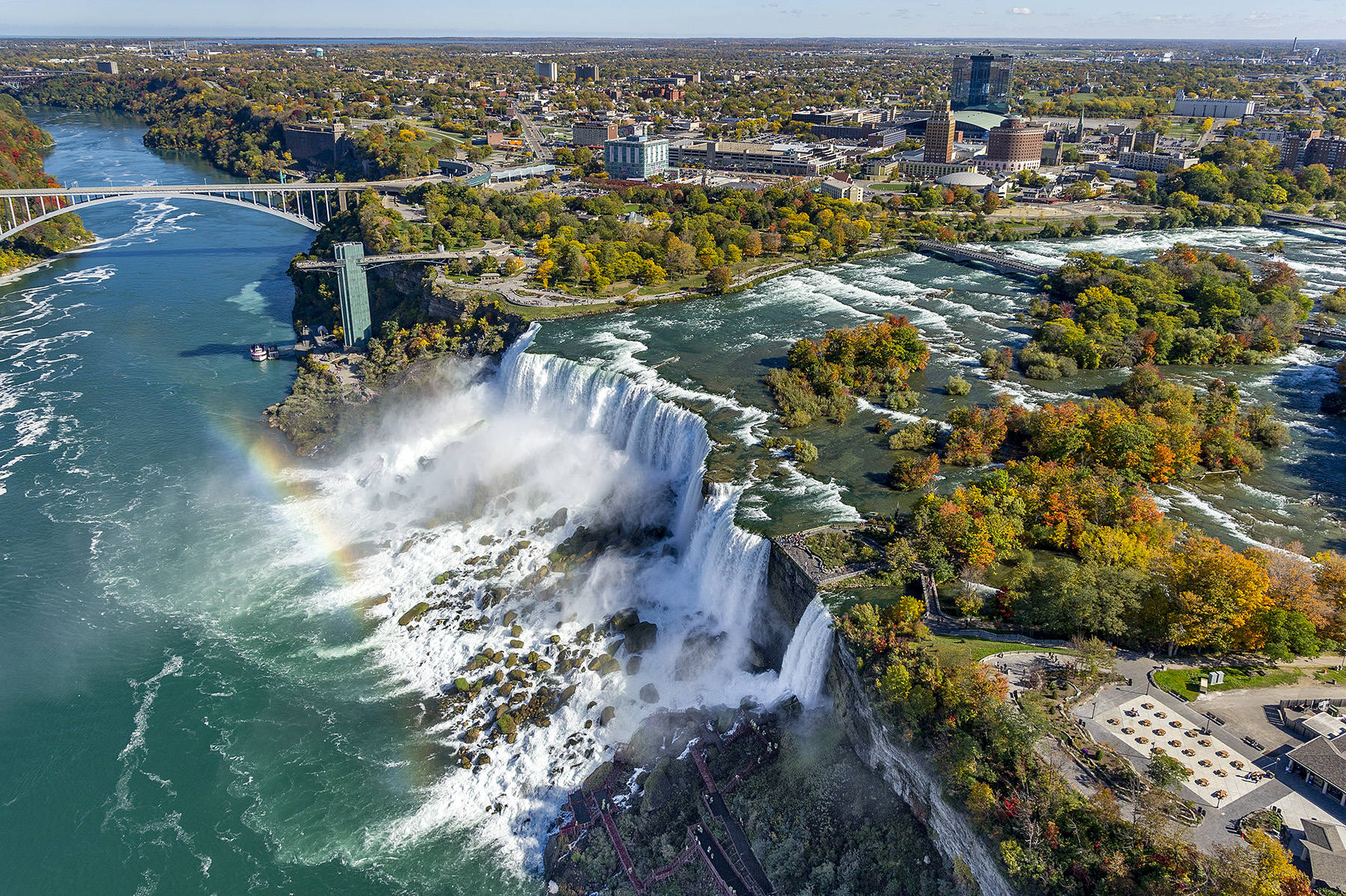
By Matt Fogleson
The gala for ASCE’s 2021 Outstanding Projects And Leaders, or OPAL, program took place on Oct. 8 during the Society’s annual convention, which was virtual this year as it was last because of the ongoing COVID-19 pandemic. It was during the OPAL Gala that the winning projects honored in the 2021 Outstanding Civil Engineering Achievement awards were announced. The projects cover the gamut, from parks and water supplies to transportation and flood control; there’s even a mysterious, moving mud spring.
2021 OCEA OPAL AWARD WINNER
Niagara Falls State Park Transformation Initiative
The U.S. side of one of nature’s most breathtaking sights has stepped up its game, thanks to the Niagara Falls State Park Transformation Initiative. The rehabilitation, which included a series of more than 16 full-scale, interconnected projects across 400-plus acres, took top honors in ASCE’s 2021 Outstanding Civil Engineering Achievement awards.
The park’s Canadian neighbor across the Niagara River has long been considered by many the better option for visitors hoping to catch great views and immerse themselves in the grandeur of the falls. The completed project may be altering that perception. The project team, with Dennis J. Kennelly, P.E., M.ASCE, of T.Y. Lin International as the engineer of record, made exhaustive upgrades. State-of-the-art design and technology brought improvements to the New York state park’s attractions, infrastructure, buildings, parking and bus facilities, lighting systems, and pedestrian and vehicle circulation routes. The project also overhauled the mechanical, electrical, irrigation, and stormwater systems.
“The transformation has created new public awareness and enthusiasm,” according to the team’s submission for the OCEA honor. “No longer the forgotten neighbor of the ‘Canadian side,’ Niagara Falls State Park is a destination that brings visitors to within feet of the falls and mighty Niagara River. Truly a new day has dawned on the park and its surroundings.”
The project remedied years of disrepair, undersized overlooks, inadequate pedestrian circulation, and antiquated systems. All work was performed with an emphasis on green infrastructure, sustainability, and longevity while improving safety and accessibility for visitors, including full compliance with the Americans with Disabilities Act. Accessible routes lead to all major viewing points, including sites where treacherous terrain and steep walkways previously prohibited access to visitors with limited physical abilities.
So well received were the early phases of the project that the New York State Office of Parks Recreation and Historic Preservation added assignments and funding and extended the timeline, bumping the overall budget from $25 million to $65 million. TYLI’s work represented about $40 million of the total.
The project exceeded the client’s goals and was completed in accordance with the expanded schedule and budget. It proved a worthy investment. With more intimate views of this natural wonder available to visitors, attendance has risen from about 8 million annually at the start of the project to more than 9.5 million. Six new hotels have opened nearby, and two more are planned.
Overcoming challenges
Visitors travel from all over to see Niagara Falls, so closing the park to make the work easier to accomplish was not an option. Instead, construction phasing restricted access to one major viewing point at a time.
One highlight for many visitors is the Cave of the Winds attraction. Hands-on exhibits and films educate and entertain visitors before an elevator transports them 175 ft down for a “get wet” view of the power and magnitude of the falls. To alleviate long wait times, the redesigned attraction now features timed ticketing.
To ensure the project stayed on track, key leaders met every two weeks on-site, which enabled design and field engineering issues to be addressed in real time. The meetings included designers, park managers, contractors, and construction managers. “This unique collaboration allowed in-the-field redesign of walls, utilities, and surface features along several river gorge areas to maintain public safety and progress construction without delay,” according to the submission.
Among the project’s innovations are:
- A fully automated parking access and revenue control system, a first that serves as a model for parks throughout New York state.
- Specialized, energy-efficient LED lighting that illuminates the Niagara River’s turbulent flow and creates an impressive, year-round visitor experience while withstanding intense winter ice buildup.
- Detachable light poles that can be removed before the onset of winter.
- New utility services from the mainland to Goat Island.
- Water and sanitary mains that incorporate a redundant heating system to protect against freezing, previously a problem.
To ensure success, the team was resourceful. For example, during the rehabilitation of the Luna Island pedestrian bridge, which is just 80 ft from Bridal Veil Falls, team members inspected the underside of the bridge at night using specialized rigging to avoid conflict with Luna Island construction and tourists’ use of the Hurricane Deck. Engineers performed a hands-on inspection while suspended just above the flowing river. For the Goat Island bridge, which is 700 ft long and just upstream of the American Falls, the team used safety harness tie-offs and specialized scaffolding for the under-bridge inspection and construction work.
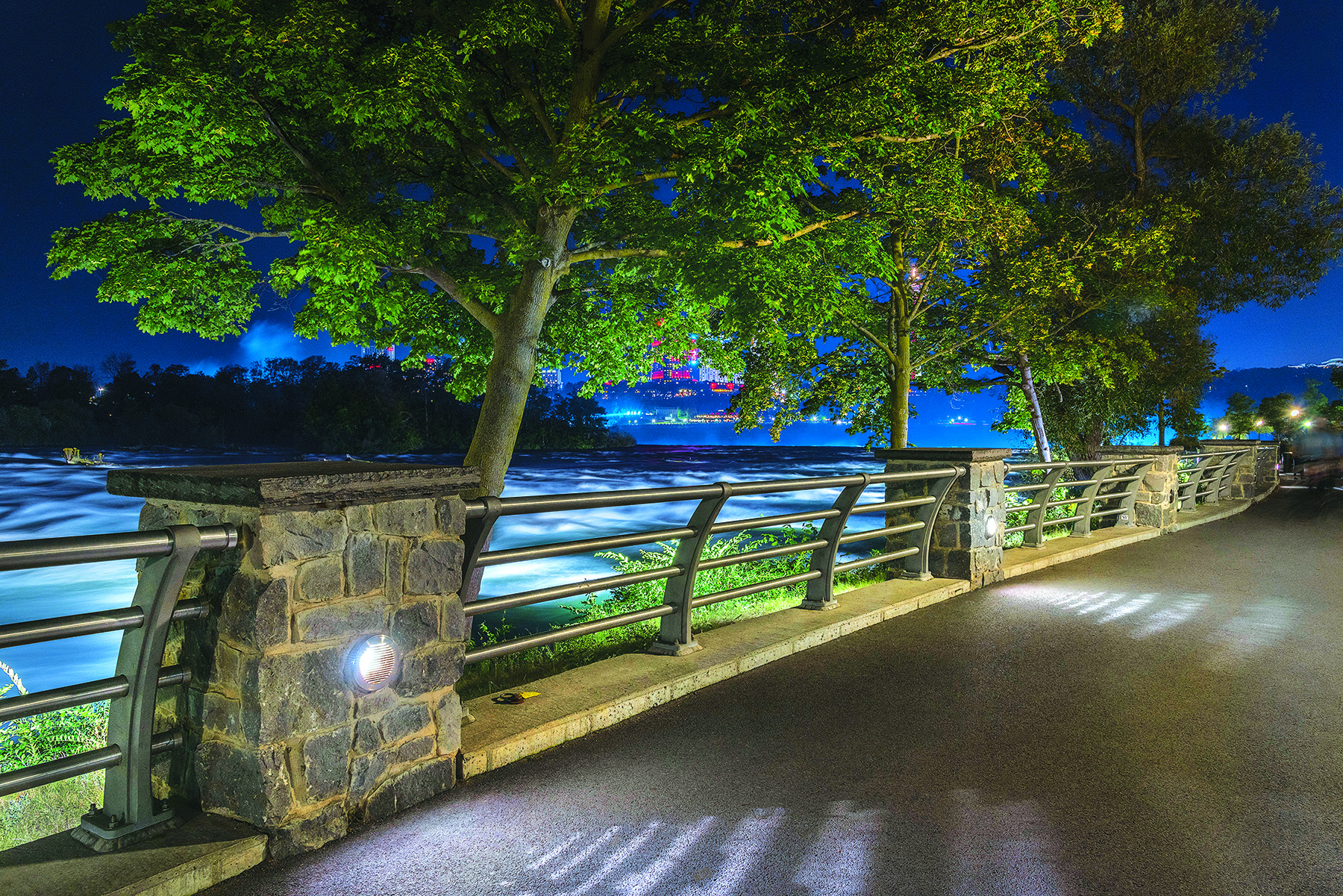
The park’s varying subsurface and poor soil conditions — including hidden pockets of soil with consistency akin to quicksand— presented another challenge. The team addressed unrecorded former fill areas, buried foundations dating back 150 years, and abandoned underground structures, requiring the team to use ground-penetrating radar and seismic monitoring equipment.
In some locations, specialty structural design and construction methodology were incorporated to overcome heavy ice loading and safety issues associated with the steep slopes, unknown structural conditions, and underlying rock formations. Seismic monitors ensured stability of the rock-support and railing-wall foundations.
Focus on the environment
Throughout the park, the new landscape design, stormwater management, and irrigation improvements focus on green infrastructure and sustainable design. The plan instituted best management practices and sustainability for permanent stormwater management, including the introduction of new trees and planting beds, installation of stormwater quality units, and construction of vegetated bioswales and a bioretention basin to manage runoff, filter pollutants, and increase rainwater infiltration before discharge to the river.
Other environmental considerations include:
- An invasive species management plan that safeguards state-protected plants and animals.
- Retaining walls and railings along the river’s edge that blend safety with accessibility, enhance sustainability, require less maintenance, and limit debris from blowing into the water.
- Highly efficient electrical, mechanical, sanitary, water, and telecommunication systems. The sanitary sewer collection and transmission systems are effective, cost-efficient, and easy to maintain. Looped water mains replaced mains with insufficient capacity and dead-end mains that presented stagnancy issues.
“Today, the park is a visual model of sustainability, state-of-the-art innovation, and ADA accessibility for its millions of annual visitors,” wrote Kennelly and co-authors F. Jack Buholtz, P.E., and Lynn M. Williams in the Civil Engineering feature “Niagara Transformed” (March 2020, pages 52-59, 80). “The park’s systems — visible and behind the scenes — are vastly more efficient and produce extraordinary savings in cost and time. Many of the systems serve as benchmarks for parks across the state.”
2021 OCEA SILVER AWARD WINNER
Lake Mead Intake No. 3 Low Lake Level Pumping Station
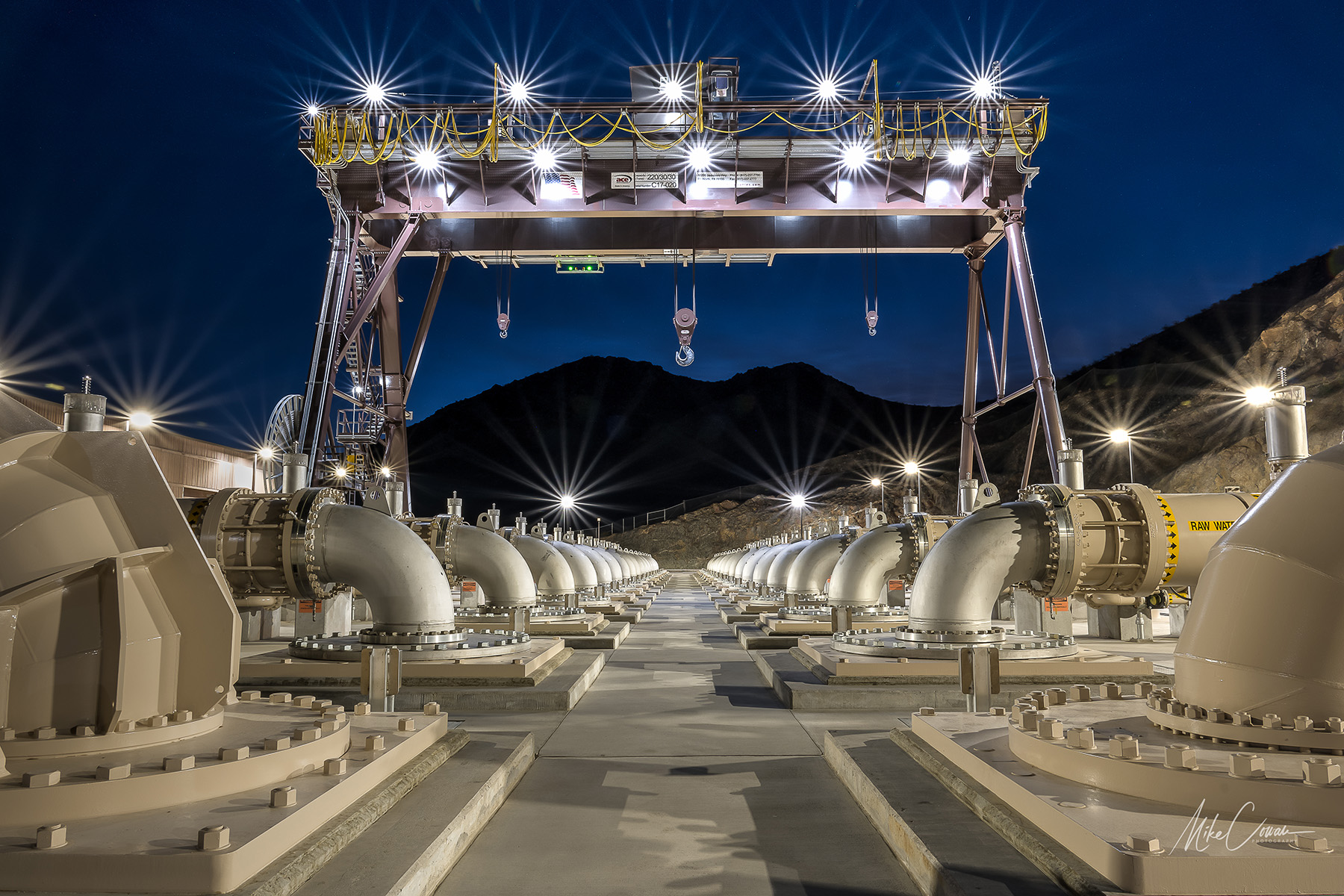
Greater Las Vegas constitutes about 73% of Nevada’s population and generates about 75% of the state’s economic output, so reliably providing water for the tourist destination in the desert is critical.
With this in mind, a joint-venture team — with Ted Davis, P.E. of Jacobs and Jarah Parke, CFM, PMP, of Stantec as engineers of record — spearheaded the Lake Mead Intake No. 3 Low Lake Level Pumping Station and Discharge Aqueducts project, this year’s Outstanding Civil Engineering Achievement awards silver medalist.
In response to decades of drought in the Colorado River Basin, the Southern Nevada Water Authority completed Lake Mead Intake No. 3 in 2015. Acting on a citizens advisory committee recommendation, SNWA swiftly began constructing the Low Lake Level Pumping Station to avoid disruptions to water delivery operations for the region’s 2.2 million residents and 33 million annual visitors.
Design of the underground elements began in 2015 and included a 535 ft deep by 26 ft diameter access shaft, a 377 ft long by 33 ft wide by 36 ft high modified horseshoe-shaped forebay more than 500 ft underground, and 34 deep-drilled well shafts, each 91 in. in diameter and lined with 72 in. diameter steel casings.
Design for the above-ground works and discharge aqueducts included 36 to 180 in. diameter steel pipelines, 36 to 144 in. large-diameter valves, custom submersible pumps, an electrical building, an electrical substation, and electrical and other utility service connections.
The project, which features the world’s largest flow capacity and deepest submersible pumps, was completed on time in April 2020 and below
SNWA’s $650 million budget.
“The success of this project stems from a well-qualified team fully buying into the partnering concepts of mutual respect; consideration of all ideas whether from owner, designer, or contractor; early collaboration between owner, designer, contractor, and all interested stakeholders; and quick collaborative solutions when issues arose,” the OCEA submission notes.
SNWA’s first two intake stations at the nation’s largest-capacity human-made reservoir use line-shaft vertical turbine pumps. Their size and depth pushed the limits of standard practice. The new station required a setting about 200 ft lower than the next-deepest station.
The well shafts, which are about 500 ft long, had to be sufficiently straight and on vertical alignment so the pumps would not contact the sides of the casings. A specially designed directional drill made pilot holes followed by two levels of rock reaming. The team’s special welding details maintained straight casings, and its procedures for grouting the casings in the shafts prevented movement or deflection.
Connecting the station to the 180 in. diameter feed pipe of the 600 mgd water treatment plant had to be accomplished within two 72-hour shutdown periods to avoid disrupting Las Vegas’ water supply. The first shutdown provided a bypass; the second completed installation of the connection.
Ever-conscious of sustainability in its desert environment, the SNWA had construction water pumped to the nearby raw water treatment plant. An on-site concrete batch plant reduced truck traffic through the Lake Mead National Recreation Area, and commercial power eliminated the need for temporary diesel generators. All underground excavated material was used on-site.
The station can pump 900 mgd of water per day and can draw water even if Lake Mead reaches “dead pool”— the elevation at which Hoover Dam can no longer release water. Aesthetic measures such as color blending and berms mitigate the facility’s visual impact.
2021 OCEA BRONZE AWARD WINNER
Governor Mario M. Cuomo Bridge
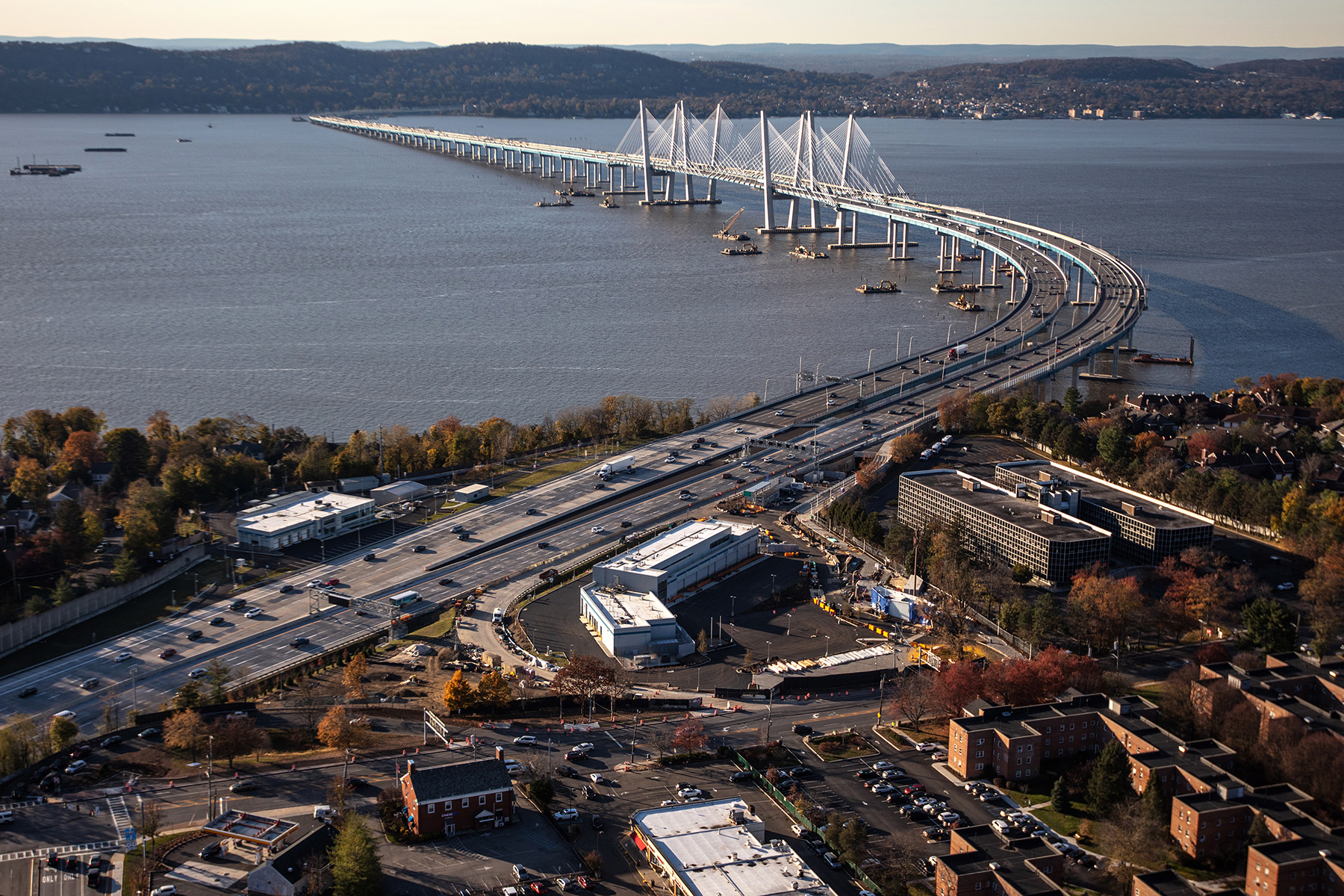
Replacing the Tappan Zee Bridge was a massive undertaking. For 62 years, the bridge crossed the Hudson River, connecting the New York counties of Rockland and Westchester. It was designed to carry up to 100,000 vehicles per day, but by the time of its retirement in 2017, it was handling an average of 140,000 vehicles per day.
Its replacement, the Governor Mario M. Cuomo Bridge, is a 3.1 mi state-of-the-art, twin-span bridge. Under landmark design-build legislation, the crossing was delivered via one of the nation’s largest single design-build transportation contracts. In addition to the enormous scale of the crossing, the team overcame poor foundation conditions. Among the creative solutions were long-span plate-girder approaches, precast and preassembled components, giant waterborne cranes, and simultaneous fabrication paths.
Impressively, the project was completed on time in June 2020 and met its $3.98 billion budget. With Ken Wright, P.E., as the engineer of record, the project earned bronze in ASCE’s Outstanding Civil Engineering Achievement awards.
The bridge’s parallel crossings each feature a 2,230 ft cable-stayed main span and 10 approach units. The bridge provides eight general traffic lanes, lanes for emergency vehicles and buses, extra-wide shoulders, and a shared-use path with six viewing platforms. Also featured: all-electronic toll collection facilities and two multistory buildings for structure maintenance and police operations. The design also allows for future dual-track rail service between the spans.
The foundation challenges included poor soils, large geotechnical variations, high seismicity, and ice loading. “Designers selected structure types with proven service life that minimized foundation demands. The design maximized span lengths, resulting in fewer foundations,” the OCEA submission says. “The team also used the highest-capacity friction piles ever used in deep clay soils.”
The structural health monitoring system is the largest and most complex of its kind in the country. It includes more than 300 sensors that provide real-time feedback about pier and pylon tilt, stay-cable dynamics and loading, steel and concrete temperatures, expansion joint movement, deformation and settlement, and reinforcement corrosion rates.
The team minimized work over water, ensured safety, and expedited construction time with innovative precasting techniques. This simplified the construction of the pile and pier caps, bridge decks, shared-use path, and earth-retaining structures. In place of conventional cofferdams, the team used a precast tub system for the pile caps, which acted as a form for the waterline pile cap. Tubs were precast off-site, barged to the site, and set over driven piles. A 1,929-ton crane hoisted massive, preassembled sections complete with utility support and catwalk/access systems up to 410 ft long into place.
The lighting system is also noteworthy. Its wireless repeater node allows roadway lights to talk to adjacent fixtures and send real-time signals to operators regarding fixture status, dimming, maintenance, life span, and schedule. Operators can remotely program the lights, schedule maintenance, and monitor energy usage. The highly efficient system uses 75% less energy than traditional lighting technology.
The project, which created thousands of jobs and involved nearly 1,400 companies, achieved a 100-year service life in part by using special concrete mixes, galvanized reinforcement steel, painted weathering steel, specific deck coatings and overlay, and piles designed for corrosion.
The bridge’s design provides a clean aesthetic, enhances structural support, improves safety, and maintains the open-air feeling of the Hudson Valley. The six pedestrian viewing platforms, which are on the westbound span, reflect the region’s culture and history and provide “a new connection for nonmotorized transport and … an exciting recreational opportunity that currently doesn’t exist in Rockland or Westchester counties,” the OCEA submission says.
2021 OCEA HONOR AWARDS
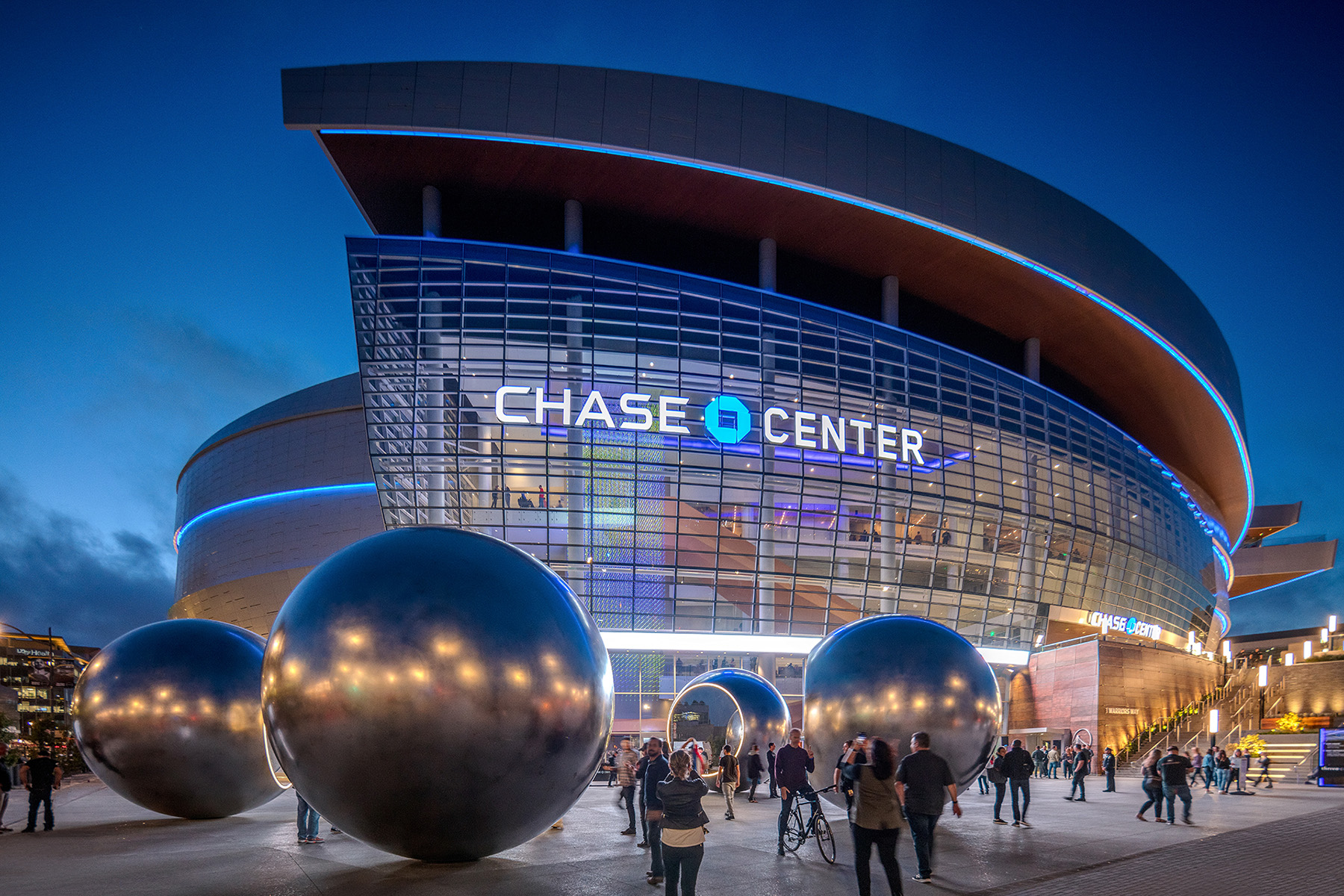
Project: Chase Center at Thrive City
Engineer of record: Brian Dickson, P.E., S.E., Magnusson Klemencic Associates
Summary: The new home for the NBA’s Golden State Warriors is the centerpiece of the transformation of San Francisco’s Mission Bay neighborhood from deteriorating industrial landscape to flourishing urban core. The massive development includes an 18,000-seat arena, team headquarters, two 11-story office towers, a jewel-box structure, 29 retail outlets, two atrium entrances, and a striking cantilevering “sky bar.”
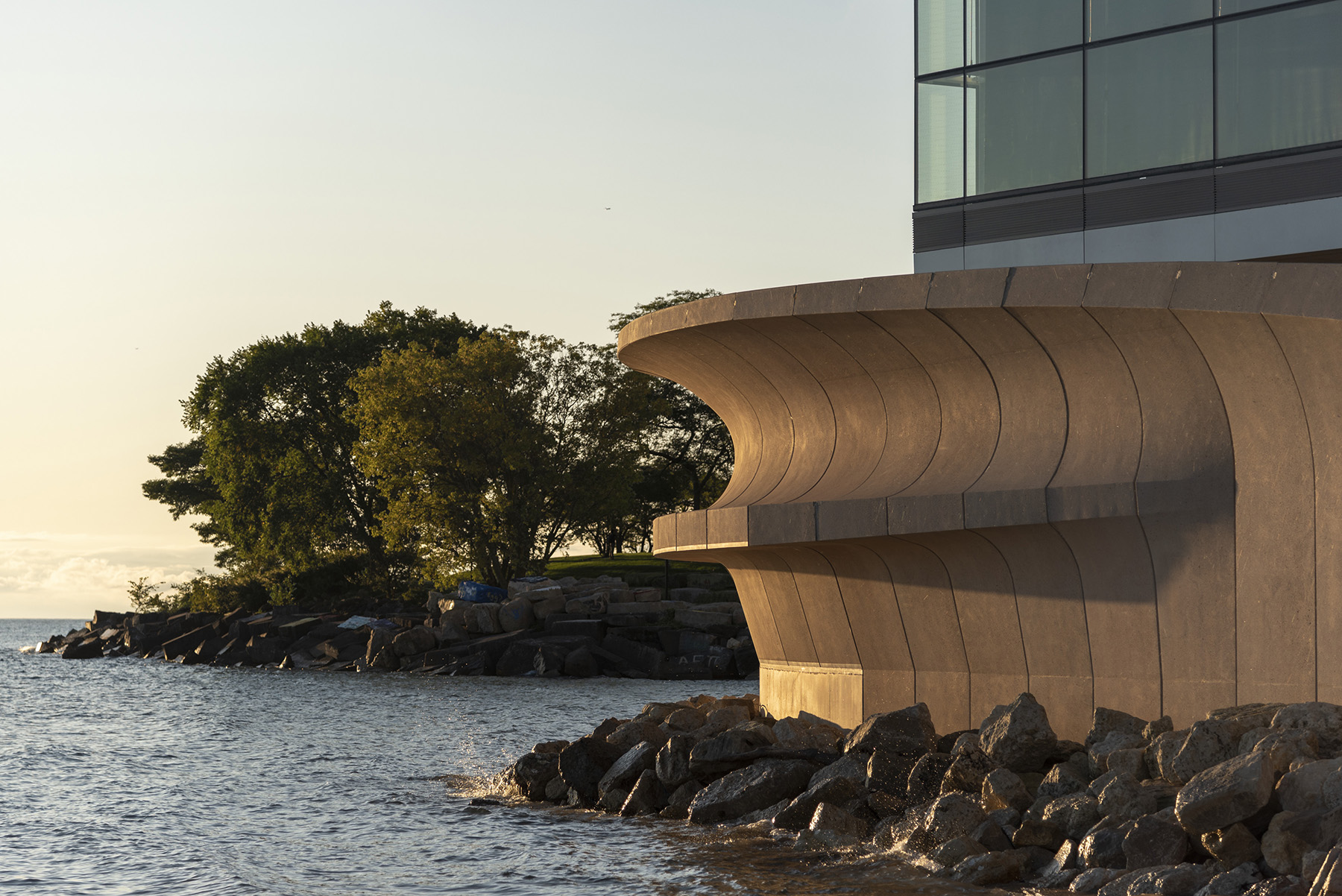
Project: Coastal Wall at the Northwestern University Ryan Fieldhouse and Walter Athletics Center
Engineer of record: Bill Wood, P.E., SmithGroup
Summary: A constrained site between Evanston, Illinois, and Lake Michigan required innovative design for a new $270 million athletics center to be situated directly next to the coastline. The design team buffered the facility and its users from the lake’s severe coastal environment with a double recurved coastal wall that mitigates wave energy and redirects it back to the lake.
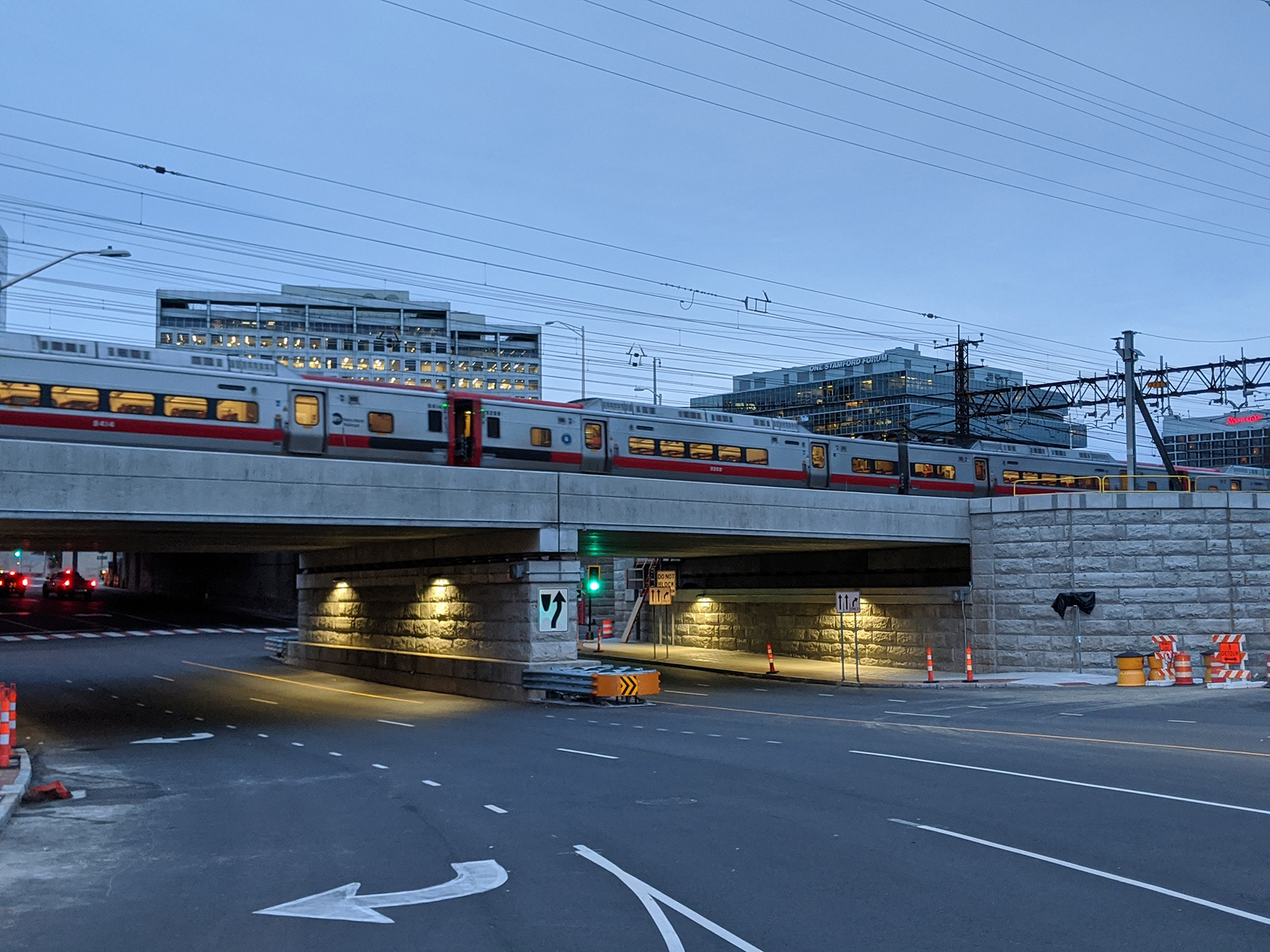
Project: Metro North Railroad Bridge Over Atlantic Street
Engineer of record: Jonathan Ives, P.E., AECOM
Summary: This project in densely populated Stamford, Connecticut, required replacing an aging railroad bridge in a challenging work site while maintaining service for 350 trains per day serving more than 125,000 daily commuters. Through planning, active management during construction, and robust public outreach, six bridge spans were installed. Surrounding roadways reopened on schedule.
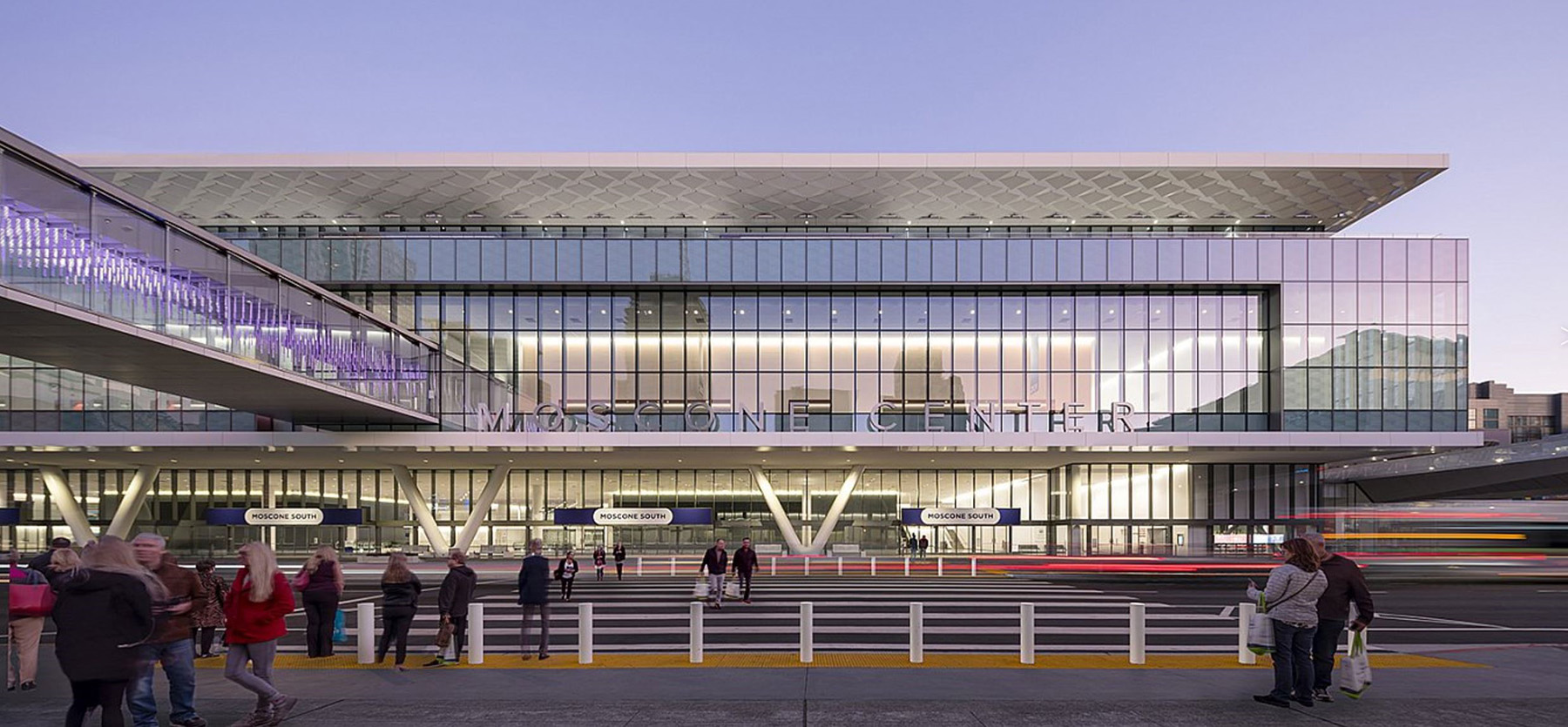
Project: Moscone Convention Center Expansion
Engineer of record: Mark Sarkisian, P.E., S.E., LEED AP, F.AEI, M.ASCE, Skidmore, Owings & Merrill
Summary: The team renovated San Francisco’s original Moscone North and added a 94 ft tall structural steel building — Moscone South, which includes 220,000 sq ft of column-free ballroom and meeting spaces. Also new: a viaduct under Howard Street and two elevated pedestrian bridges linking the buildings. Phasing the project allowed ongoing conventions in a city that has reasserted itself as a premier conference destination.
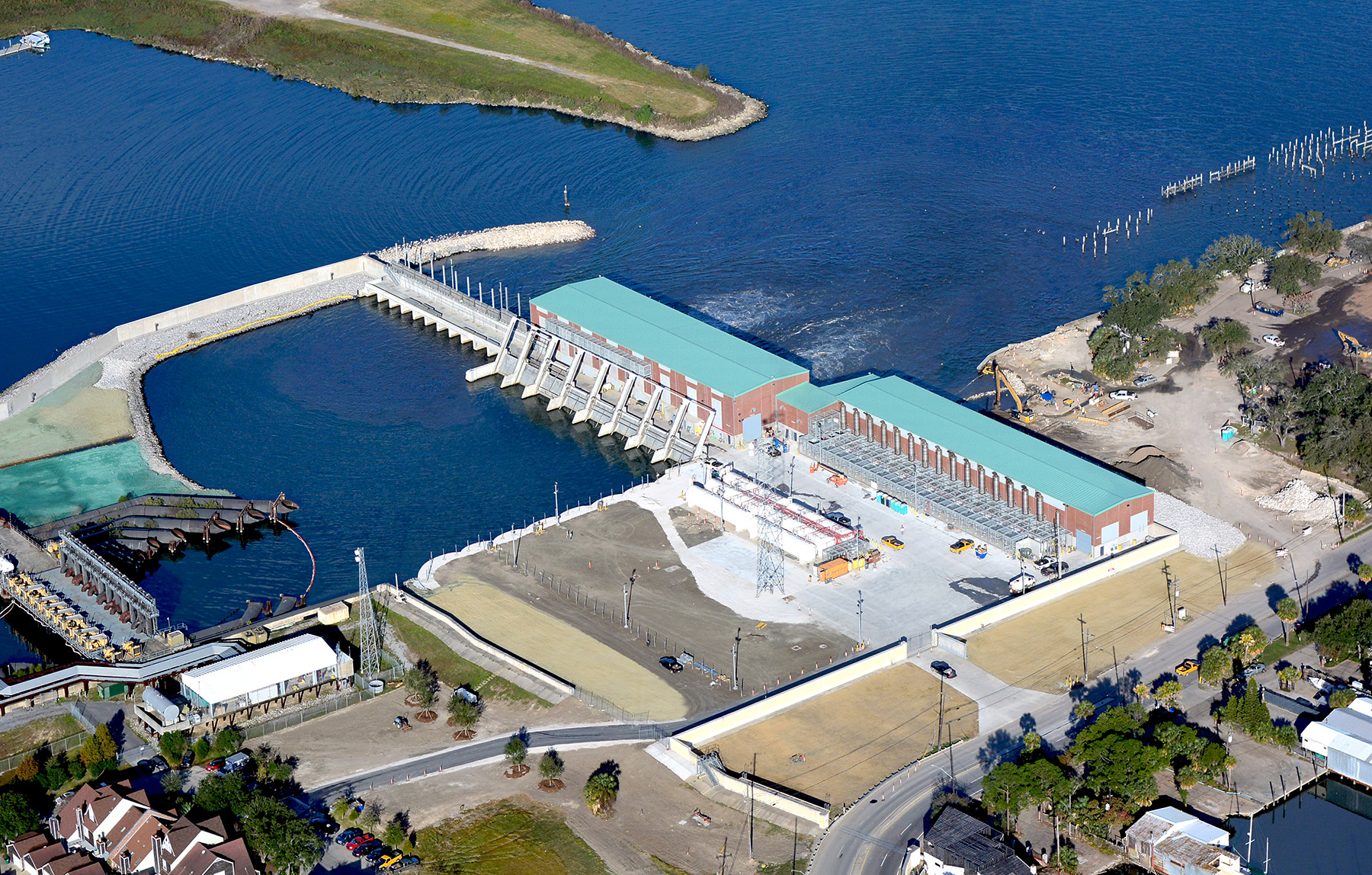
Project: Permanent Canal Closures and Pumps (PCCP)
Engineer of record: Daniel J. Grandal, P.E., M.ASCE, Stantec
Summary: The facility is the final piece of a $14.6 billion plan to help New Orleans improve resiliency and recover from 2005’s Hurricane Katrina. Five-story-high axial pumps and geared motors provide drainage pumping and improved water evacuation for three outfall canals; 18 ft tall surge gates serve as flood barriers from storm surges; and the facility is a power station with enough fuel for five days.
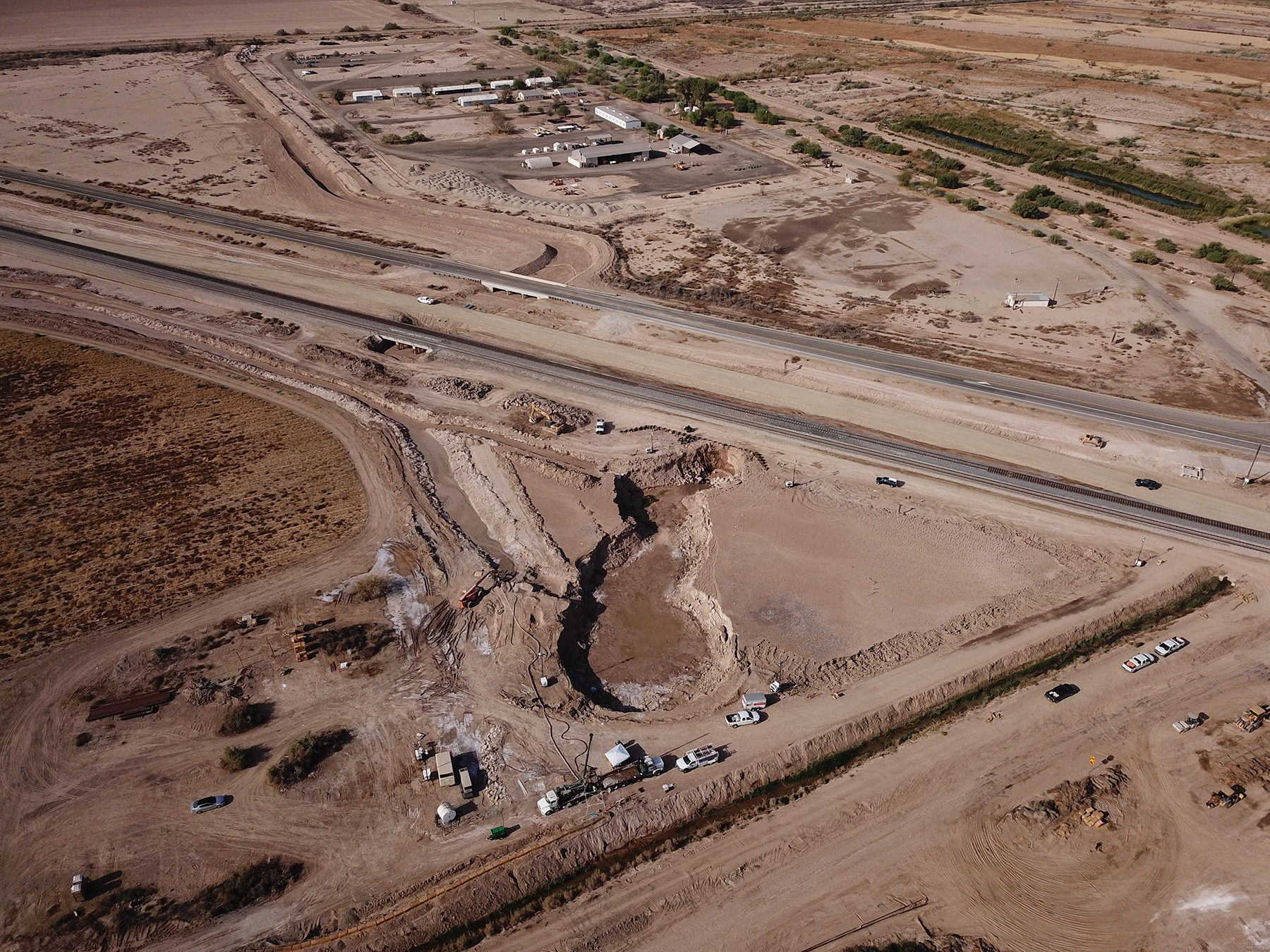
Project: Union Pacific Railroad, A Moving Mud Spring Threatens Critical Infrastructure
Engineer of record: R. Travis Deane, P.E., G.E., Shannon & Wilson Inc.
Summary: A team acted to protect infrastructure after a large CO2-driven mud spring in Imperial County, California, unexpectedly began moving. In 2018, two years after forming, the mud spring posed a threat to a railroad, a pipeline, and a state highway. The team’s geotechnical services included geophysical surveys, subsurface explorations, relief wells, and construction of a sheet pile wall.
Matt Fogleson is the technical editor of Civil Engineering.
This article first appeared in the November/December 2021 issue of Civil Engineering as “The 2021 Outstanding Civil Engineering Achievement Awards.”



